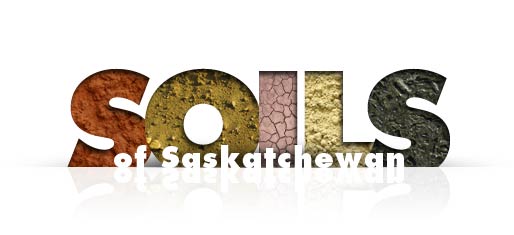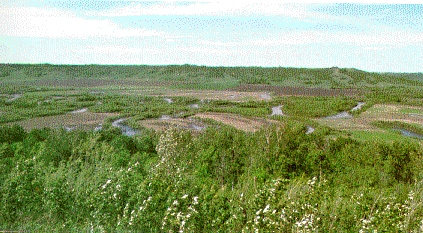
Alluvial deposits in the Qu'Appelle Valley
Alluvial Deposits
Alluvial deposits are materials laid down by streams and rivers in valley bottoms and collection basins since glaciation. These deposits are stratified and often contain beds or layers that are oblique to the main planes of stratification, indicative of their river or stream origin.
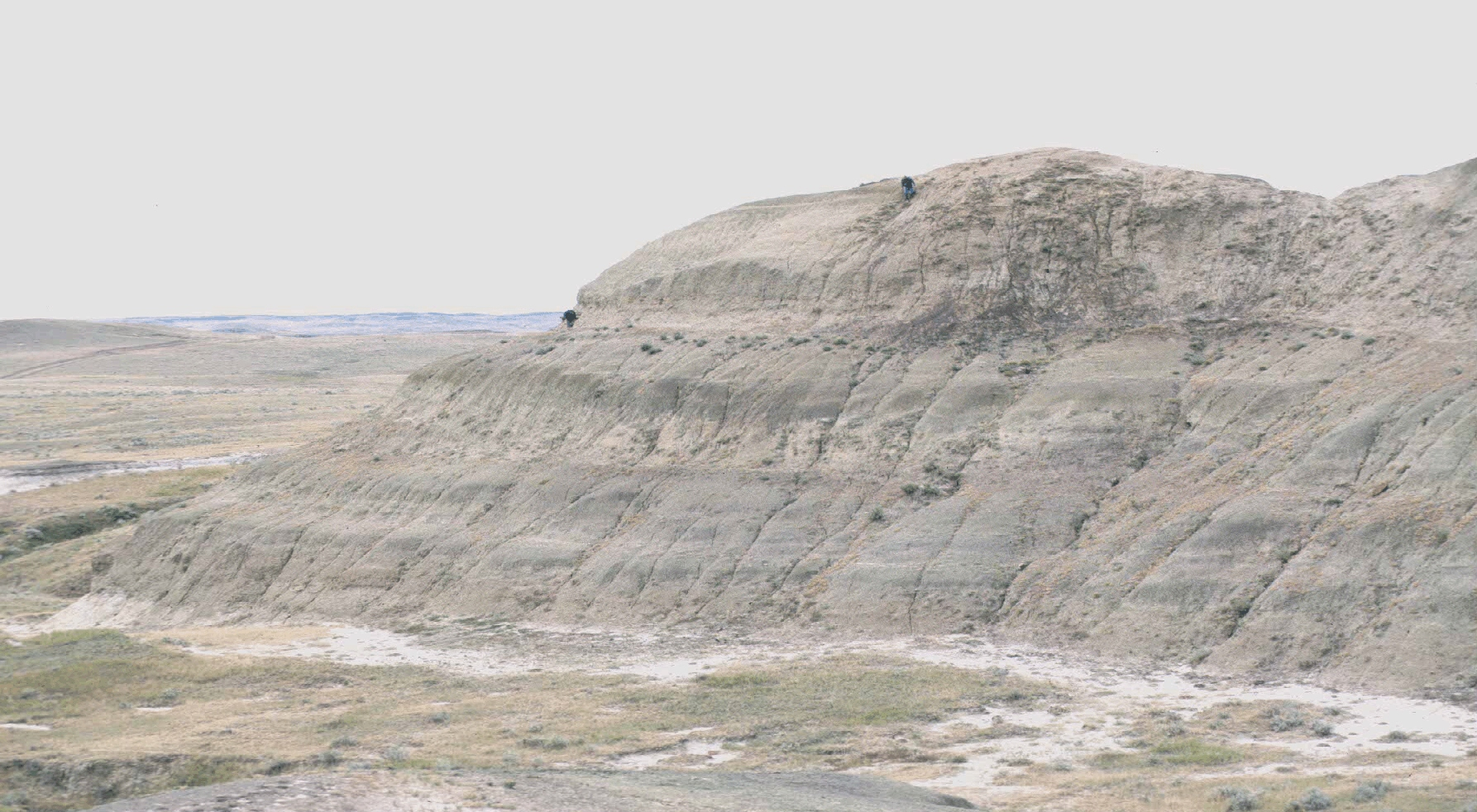
Exposed bedrock deposits
Bedrock Deposits
Bedrock refers to preglacial sediments, exclusive of stratified deposits in preglacial valleys, that underlie the surficial glacial sediments. These bedrock materials may or may not be consolidated into solid rock and may be exposed at the surface
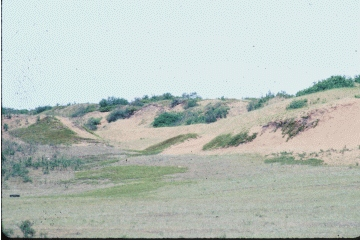
Partially active sand dune area
Eolian Deposits
Eolian deposits are sandy or silty deposits that have been moved and re-deposited by the wind, often in the form of sand dunes or silty loessial veneers or blankets. Eolian deposits are well-sorted, poorly compacted and may contain beds or layers
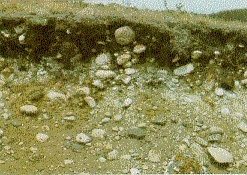
This gravelly deposit has a very large-size stone component
Fluvial Deposits
Fluvial deposits are materials laid down in rivers and streams carrying glacial meltwater. They are usually sandy or gravelly and may contain beds or layers that are inclined or oblique to the main planes of stratification. These deposits are usually thick but occasionally are thin and underlain by glacial till. Materials laid down in direct contact with the glacier are termed glaciofluvial deposits.
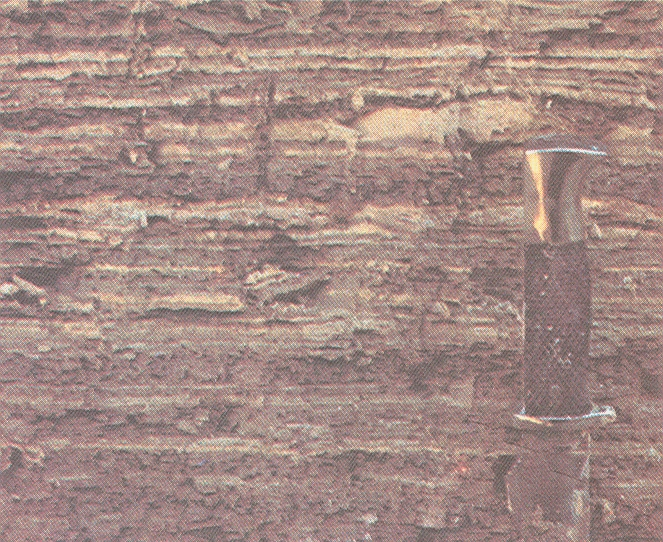
Bands of dark- and light-colored layers are common, at depth, in lacustrine deposits. They reflect alternating summer and winter depositional sequences in former glacial lakes
Lacustrine Deposits
Lacustrine deposits are materials laid down in a glacial lake. These deposits are often stratified and characterized by dark- and light-colored beds or layers reflecting summer and winter depositional cycles in a glacial lake. Lacustrine deposits usually have a high content of very fine sand-, silt- or clay- sized particles and are typically stone-free. Those dominated by sand sized particles are termed loamy lacustrine while those dominated by silt and clay sized particles are termed silty and clayey lacustrine, respectively. Materials laid down in close contact with the glacier are termed glaciolacustrine deposits.
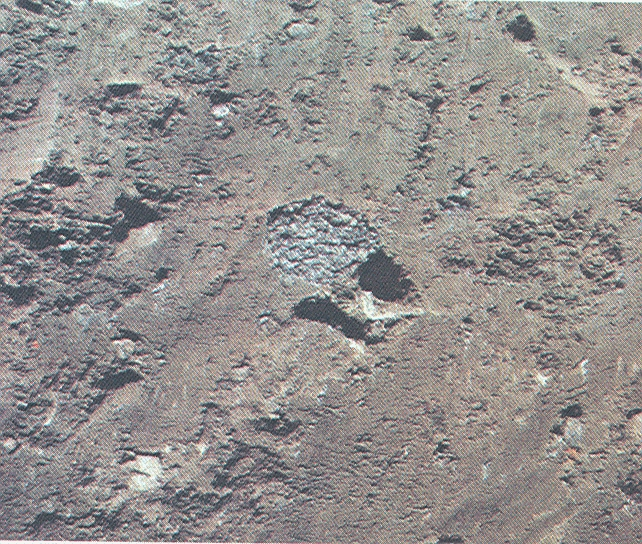
Morainal deposits typically have stones and pebbles of various sizes embedded in a matrix of sand-, silt- and clay-sized materials
Morainal Deposits
Morainal deposits, often referred to as glacial till, are materials laid down by the glacial ice. These deposits are generally comprised of stones and gravels embedded in a matrix of sand, silt and clay sized materials. When this matrix contains nearly equal amounts of sand, silt and clay they are called loamy morainal deposits. When there are larger amounts of sand, they are referred to as sandy morainal.
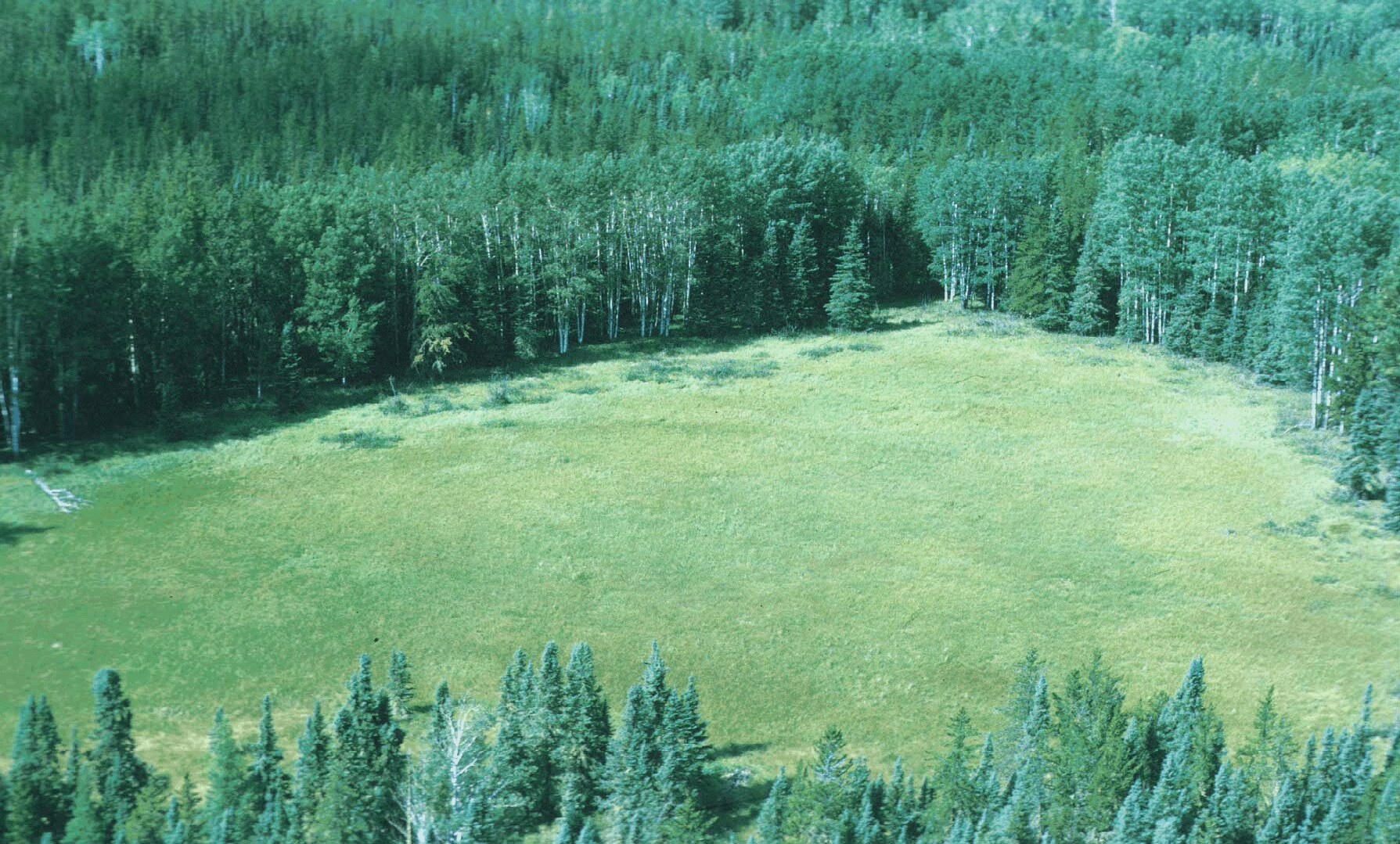
Organic deposits occupy the central area of this photograph
Organic Deposits
Organic deposits are the partially decayed remains of plants that have accumulated in wet or very poorly drained depressions and by the gradual in-filling of lakes by aquatic vegetation. They are generally comprised of either the remains of mosses, or sedges and grasses, and often have inclusions of woody materials.
